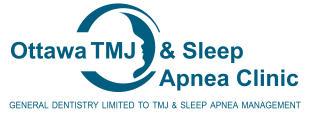For many, migraines are a fact of life, an infrequent but not uncommon occurrence of pain and sensitivity that can occur as a result of a number of different triggers. Others live with migraines on a daily basis and are unsure of how to combat them effectively. Today, we will examine what migraines are, how they differ from headaches, and what the most effective treatment methods are.
What is a Migraine?
A migraine is a variation of a headache that delivers more intense pain and exhaustion. Generally, symptoms are more severe than what people experience. The occurrence of a migraine can be tied to any number of factors, including stress overload, illness, and exposure to harsh lighting for prolonged periods.
The Difference Between Headaches and Migraines
Migraines are often more debilitating than normal headaches, becoming less of an inconvenience and more of a threat to one’s health. Unilateral in nature (only occurring on one side), migraines deliver less coverage yet more intense pain than headaches, the latter of which are bilateral. Migraines are usually accompanied by bodily reactions such as nausea, vomiting, and light and sound sensitivity. Treatment for basic migraines usually entails resting in a quiet, dimly-lit area, but even so, they can last anywhere from 30 minutes to several days depending on the severity. On occasion, an individual with an impending migraine may experience an anomaly known as an “aura,” where flashes of light occur 30 minutes to an hour before as a warning sign of sorts.
How to Tell if a Migraine is Caused by TMD
Migraine pain can be the direct result of many different triggers, including genetics, stress, dehydration, and light sensitivity. TMD can cause it as well. If your temporomandibular joints or jaw hurt every time that you experience a migraine, it could very well be an indicator of them acting as a major trigger.
How to Treat TMD-Infused Migraines
At the Ottawa TMJ & Sleep Apnea Clinic, we sometimes treat TMD-associated migraines with a specialized, custom-fitted oral appliance that reduces tension in joints and muscles that normally cause migraines. Another effective treatment is Botox. Studies indicate that 50% of migraine sufferers directly benefit from Botox treatments that relax the muscles typically associated with migraines.
Migraine sufferers can be of any age, background or genetics, and it can be difficult to pinpoint the exact cause of the pain. If you are living with frequent migraines and believe that they may be linked to TMJ, contact us to book an appointment with one of our dentists.

